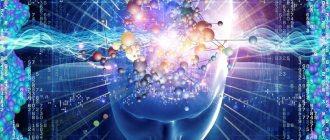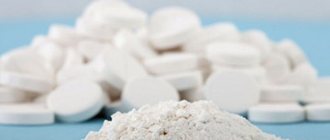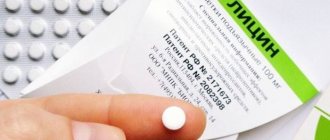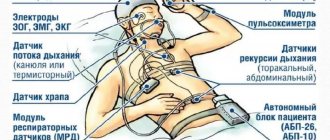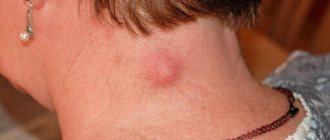Nowadays we hear the definition of “vegetative-vascular dystonia” everywhere.
Its owners are 80% of the population. Generally speaking, this condition occurs due to an imbalance in the functioning of the nervous system and includes about 150 symptoms. It requires an integrated approach to treatment, including medication. The drug Glycine for VSD has a fairly effective effect, since its main work is aimed at normalizing nervous processes. It is prescribed for almost every case of dystonia, but the intensity of the drug’s effects depends on the form of the condition and some other factors.
The essence of the process
It turns out that the list of the International Classification of Diseases does not include such a disease as vegetative-vascular dystonia. Therefore, it is classified as a symptom complex that can accompany many ailments.
VSD develops due to improper functioning of the autonomic nervous system, which regulates the functioning of internal organs, glands and blood vessels. When it fails, the activities of the listed structures are disrupted. Therefore, VSD is accompanied by such a wide range of symptoms:
- pain of varying localization and intensity. It is permanent;
- pain in the heart, palpitations;
- prostration;
- breathing disorder;
- cold extremities;
- sleep disturbance;
- dizziness and fainting;
- hand tremors;
- decrease or increase in pressure;
- digestive disorders;
- excessive sweating;
- bad mood, irritability, apathy and other mental disorders.
The autonomic nervous system consists of 2 divisions: sympathetic and parasympathetic. By their nature they are antagonists, that is, they perform opposite actions. If the sympathetic system increases the heartbeat, inhibits peristalsis and salivation, reduces the tone of the bladder, dilates the pupil and bronchi, then the parasympathetic system has the exact opposite effect. The parasympathetic division of the NS is activated when we are at rest. The sympathetic nervous system is activated during stressful situations.
Ideally, they should work harmoniously, complementing each other. Then our health is normal. If one of the systems begins to dominate over the other, a malfunction occurs in the body, such as VSD.
There is a theory that this condition is of a congenital, genetic nature. At the same time, a number of changes occur in the ANS, such as excessive or insufficient activity of coordinating centers, disruption of receptor sensitivity and some metabolic processes.
Vegetative-vascular dystonia comes in several types:
- cardiac;
- vascular;
- gastrointestinal;
- respiratory;
- genitourinary;
- musculoskeletal;
- neuropsychic;
- thermoregulating.
All of them are characterized by different symptoms and have their own causes.
What is Glycine
Glycine was developed in Germany in 1820. The basis of the drug is a non-essential amino acid with the same name “glycine”. It is also called aminoacetic and aminoethanoic acid. It is formed in the human body, but under certain pathological processes its synthesis may be disrupted.
Glycine is a neurotransmitter in the central nervous system and forms the basis of certain proteins. It causes protective inhibition in the central nervous system, blocks the release of excitatory glutamic acid and stimulates the production of GABA, which is an inhibitory transmitter. By reducing the activity of motor neurons, glycine helps get rid of muscle hypertonicity.
In addition, the amino acid inhibits the activity of alpha-adrenergic receptors, exhibits antioxidant and antitoxic properties, and improves the metabolism of nerve cells. Thus, glycine during VSD suppresses excessive activity of the sympathetic nervous system, helps eliminate overexcitation and restore harmony between the two sections of the VNS.
In addition to aminoacetic acid, the drug contains additional components: methylcellulose and magnesium stearate.
Mechanism of action
Glycine is the simplest amino acid, which is part of almost all proteins, both plant and animal origin.
The molecule has neurotransmitter activity, which is why it began to be used as a sedative. But how justified is such use?
As a neurotransmitter, glycine acts only on motor neurons of the spinal cord, reducing their activity.
The figure shows a motor neuron from which an axon emerges that activates muscle function.
It can be seen that another process, the collateral, extends from the axon. This process is connected to the glycine neuron. When the excitation in a motor neuron becomes too great, it leads to the activation of the glycine neuron, which releases an amino acid that inhibits the activity of the motor neuron.
This effect helps to eliminate excessive activation of the muscle fiber, for example, to overcome hand tremors or cramps.
All. Glycine no longer has any neurotransmitter activity. Then where did the hypothesis come from that it can help with stress and neurosis?
The brain stem and medulla oblongata also contain a small number of motor neurons. They are located next to the vasomotor center. And the release of glycine can inhibit the work of not only motor neurons, but also slightly weaken the activity of the vasomotor center. This exposure may slightly reduce your heart rate and lower your blood pressure.
A slight decrease in blood pressure, a decrease in heart rate and slight muscle relaxation can be perceived by a person as a kind of calm. Mainly when he believed in a similar effect of the drug.
Action for VSD
Glycine helps to cope with many vegetative-vascular disorders: it improves heart function and vascular tone, normalizes blood pressure, and restores thermoregulation.
Due to its neurosuppressive effect it:
- improves sleep;
- relieves psycho-emotional stress;
- activates mental activity;
- increases resistance to stress;
- inhibits motor overexcitation;
- eliminates headaches and dizziness;
- reduces alcohol intoxication;
- helps to adapt to the social environment.
But the question arises: does glycine really help all people suffering from VSD? According to statistics, only 50% of users achieve the desired effect. This group includes people who have a neuropsychic form of dystonia, that is, in which pathological processes are localized in the brain.
With the same form of VSD, patients are characterized by mental disorders in the form of depression, panic attacks, mood lability, aggressiveness, and feelings of tension in crowded places. It is precisely these symptoms that the drug is designed to combat by acting on the nervous system.
It is recommended to resort to the help of Glycine in the following cases:
- stressful situations;
- decreased performance;
- deviant behavior;
- cerebrovascular accidents;
- hyperexcitability;
- sleep disturbances, neuroses.
Vegetative-vascular dystonia requires comprehensive treatment and consultation of many specialists. Most of them, neurologists, psychotherapists, and cardiologists recommend drinking glycine for this condition.
Dosage regimens
The drug is available in tablets of 100 mg, 50 pieces in a blister. The dragees are white in color and taste sweet (it’s not for nothing that glycine is translated from Greek glykos as “sweet”).
It is important to know how to take these pills correctly. They are used sublingually, that is, placed under the tongue and dissolved. At the same time, do not drink water.
This method of taking the drug ensures its rapid absorption into the blood and into the brain. This reduces the amount of medication that passes through the liver. This is an important point in using the drug, because once glycine enters the liver, it can be transformed into another substance under the action of transaminase.
The standard regimen for taking Glycine is 1 tablet 2-3 times a day, but no more than 3 tablets per day. Its effect is cumulative, so it is taken for at least 1 week, in some cases 2 or 1 month.
Another feature of the drug is that it is also indicated for children. For children over 3 years old, Glycine is recommended in the same dosage as for adults. For children under 3 years of age, the dose is reduced by 2 times - 50 mg. But it is worth understanding that the decision about how much the drug should be taken and in what quantity is made by the doctor.
Side effect
Some psychotherapists working with neurotic patients prohibit them from taking such “sedatives.” But not because they can have any serious negative effects on the body. But because they represent another “crutch” for avoidance, which always drives a person into neurosis.
Every anxious patient always has many ways - “crutches” - with which he suppresses his fear and anxiety. Suppresses rather than lives them. And he doesn’t change his attitude towards them.
Such methods of relieving the condition can include calling a friend, listening to music, walking quickly around the apartment, and many other actions. And also taking glycine.
The longer a neurotic person practices running away from his anxiety, instead of consciously experiencing it and changing his habitual irrational thoughts that cause this anxiety, the further he goes into his neurosis.
Glycine cannot have any truly beneficial effect either for VSD, or for panic, or for stress. But it can strengthen a person’s thoughts that he is sick and needs some special drugs “for nerves.” That is, in fact, it can drive him further into illness.
Complications of taking the drug
Glycine is a drug that is well tolerated by the body. This is due to the fact that the amino acid in its composition is a natural substance for humans. It is quickly absorbed by tissues and causes virtually no side effects. The latter appear in extreme cases and are expressed in the form of drowsiness, weakness and low blood pressure.
The product has virtually no contraindications. It can be taken by adults and children, pregnant women and women during breastfeeding. But it is worth considering that Glycine neutralizes the effect of neuroleptic drugs, sleeping pills, anticonvulsants, and antidepressants.
The only obstacle to treatment with the drug is its individual intolerance. In patients with hypotension it should be used under blood pressure control.
Glycine can be purchased at a pharmacy without a prescription.
Use in drug addiction
After heavy drinking, take 1-2 tablets of glycine every 1-1.5 hours. The maximum permissible dose per day is not more than 1 gram of the substance or 10 tablets. Increasing the dosage does not lead to rapid recovery. If it is not possible to take the medicine every hour, then you are allowed to take 3 pieces 3 times a day along with B vitamins, for better absorption of the amino acid.
The tablet is placed under the tongue or between the upper lip and gum, or behind the cheek, and dissolved. Course duration is from 2 to 4 weeks. For systematic binge drinking, treatment is repeated after 10 days. Taken 1-2 hours before drinking strong drinks, glycine neutralizes the negative impact of the breakdown products of ethyl alcohol on metabolic processes in the body.
When coming out of binge drinking, one-time use of the drug is not enough. It is prescribed to be taken from 14 days to 1 month. For chronic alcoholism, the course is taken 4-6 times a year. The effect is noticeable after 20 days of use.
Glycine has virtually no side complications. The exception is individual intolerance to the components of the drug. It may manifest as itching and diarrhea. In addition, Glycine reduces the severity of side effects of tranquilizers, antipsychotics, sleeping pills, antiepileptic drugs and antidepressants.
Analogs and derivatives
There are several derivatives of Glycine. In fact, they all have the same active ingredient; the differences lie in the dosage of the drug. So, 1 tablet of Glycine Fortes contains 250 mg of glycine, and Glycine-Canon – 1000 mg.
Considering that the state of the nervous system suffers with VSD, doctors recommend, in parallel with glycine, taking multivitamins based on B vitamins. They help restore the functioning of the central and peripheral nervous system, balance the processes of inhibition and excitation, and improve the passage of nerve impulses. They normalize the functioning of the muscular system, participate in the synthesis of amino acids, neurotransmitters and nucleic acids.
Of these drugs, the most famous are Pentovit and Neuromultivit.
| Comparative characteristics | |||
| A drug | Compound | Mode of application | Well |
| Pentovit | vitamin B1–10 mg; vitamin B6–5 mg; vitamin B12–0.05 mg; folic acid; nicotinamide; | 2–4 tablets 2–3 times/day after meals | 1 month |
| Neuromultivitis | vitamin B1–100 mg; vitamin B6–200 mg; vitamin B12–0.2 mg | 1 tablet 1 time/day | 1 month |
According to reviews, the combination of Glycine + Neuromultivit definitely gives a positive result. Users note that anxiety goes away, concentration increases and performance improves. It is possible to get rid of irritability and depression.
Multivitamins are contraindicated for children, pregnant women and lactation. For this treatment regimen, there is an alternative - the drug Glycine-Vis. This is a complex product that includes Glycine and vitamins B1, B6, B12.
Glycine analogues include phenotropil, tryptophan, piracetam, mexidol. They also belong to nootropic drugs, but their effect manifests itself a little differently, so they will not fully replace glycine.
Glycine is an effective remedy, but there are times when it cannot cope alone. Therefore, doctors prescribe other medications to complement it. For example, picamilon, spasmalgon, banal Corvalol and valerian.
